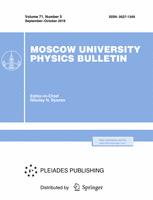A realistic model-free description of the energies of heavy and superheavy nuclei is proposed. It is shown that: (a) the charge $Z^∗$ of the most stable isobar increases proportionally to the mass number A: $Z^∗ = = aA+ b$ , where $a = 0.355$, $b = 9.3$; (b) the energy of $\beta$-decay of isobar $Q\beta (A,Z)$ increases as a linear function of difference $Z − Z^∗$: $Q\beta = k(Z − Z^{∗}) + D$, where $k = 1.13$ MeV and $D$ depends of nuclear parity; (c) the energy of $\alpha$-decay of isobars increases independently of parity in proportion to the difference $Z − Z$^{∗}$: $Q\alpha (A,Z) = Q^{∗}\alpha (A) + \lambda (Z − Z^{∗}(A))$, where $\lambda = 2k(1 − 2a) = 0.65$ MeV; (d) the reduced energy of $\alpha$-decay, $Q^{∗}\alpha (A)$, is minimal at $A = A_{0} = 232$, where $Q^{∗}\alpha (A_{0}) = 4.9$ MeV, and linearly increases at $A ̸= A_0$, then $Q^{∗}\alpha (A0) = \varepsilon |A− _{A}0|$, where $\varepsilon = 0.212$ MeV at $A < A_{0}$ and $\varepsilon =0.0838$ MeV at $A > A_{0}$. Using the obtained formulas, the energies of $\alpha$-decay are calculated for all heavy and superheavy nuclei with root mean square deviation of 0.2 MeV. It is shown that the region near $A = A_{0}$ is the domain of most stable (heavy and superheavy) nuclei, and the region $A > 280$ is the domain of increased stability.
23.60.+e α decay
27.80.+w 190 ≤ A ≤ 219
27.90.+b A ≥ 220
Department of Theoretical Physics, Faculty of Physics, Lomonosov Moscow State University, Moscow 119991, Russia



